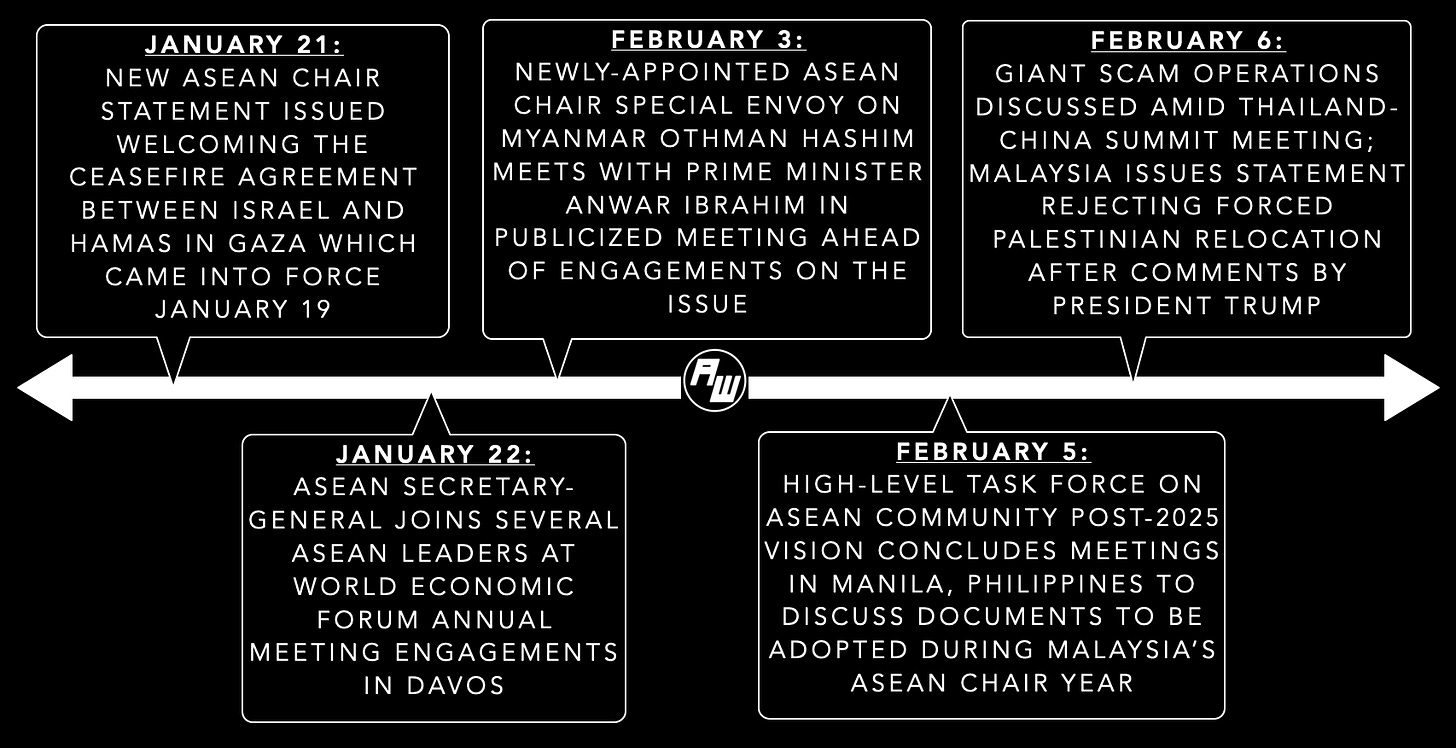Review: Future of ASEAN Centrality Beyond US-China Competition
Former deputy secretary-general reveals challenges and opportunities that lie ahead if ASEAN is to transform itself and navigate a more geopolitically contested world.
A new book by a former ASEAN deputy secretary-general reveals the challenges and opportunities that lie ahead if the grouping is to preserve its so-called centrality and transform itself to navigate a more geopolitically contested world.
WonkCount: 1,568 words (~8 minutes)
Review: Future of ASEAN Centrality Beyond US-China Competition
Context
“We have to navigate this quite difficult subject…don’t ask me that question,” Malaysia Prime Minister Anwar Ibrahim said half-jokingly recently about how the country as 2025 ASEAN chair is managing the reality of intensifying U.S.-China competition1. His remarks reveal challenges that lie ahead for ASEAN in 2025 and beyond as it prepares to unveil a new two-decade long community-building vision and foster greater unity amid diversity across sectors like the digital domain (see ASEAN Wonk graphic below subsequent paragraph on select recent developments).
A new book Transformative ASEAN by former ASEAN deputy secretary-general Pushpanathan Sundram provides an experienced insider’s reflections on the regional grouping’s future2. In doing so, it adds to a collection of standalone books by former Southeast Asian officials and diplomats on the grouping in addition to those by scholars3. These include Does ASEAN Matter? by Indonesia’s former foreign minister Marty Natalegawa; The Making of the ASEAN Charter edited by Singapore’s ambassador-at-large Tommy Koh and ASEAN Centrality written by former Philippine permanent representative to ASEAN Elizabeth Buensuceso4. Transformative ASEAN reads just over 300 pages5.
Select Key Recent ASEAN-Related Developments
Analysis
The book makes the case for how ASEAN can transform itself to navigate a more contested world. Transformative ASEAN unpacks the dynamics behind ASEAN’s oft-cited record as the developing world’s most successful regional grouping despite its flaws and charts out a multifaceted approach for it to navigate a more contested world. It does so through an insider’s account of key dynamics that will be familiar to longtime regional watchers. These include navigating divergent country positions before the adoption of the historic ASEAN Charter in 2007 to rejections of internally floated proposals to expand the ASEAN Secretariat’s role – an attempt to reverse what former ASEAN Secretary-General Ong Keng Yong referred to as a role that was at times “more secretary than general.”6 Pushpanathan, who served in various positions including ASEAN deputy secretary general, also charts recent datapoints in ASEAN’s evolution that demonstrate efforts to evolve despite constraints, with a case in point being the convening of the inaugural ASEAN think tanks summit in Jakarta last September. “The organization must continue to adapt and evolve to maintain its central position amidst the dynamic interactions of global powers,” the book notes before laying out strategies for how ASEAN can do this moving forward7.
Transformative ASEAN also forecasts the outlook for the regional grouping in key geopolitical and geoeconomic areas that are important to watch and will be of interest to scholars, policymakers and businesses alike (see originally generated ASEAN Wonk table below for a summary of these derived priority areas, along with major datapoints to watch and notable details. Paying subscribers can also read the rest of the “Analysis” section and “Implications” section looking at how these dynamics play out in the future).





